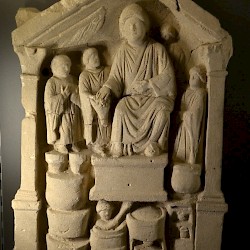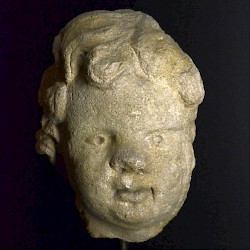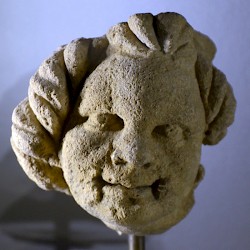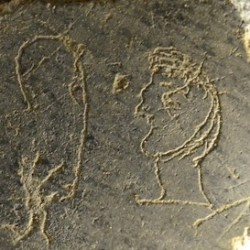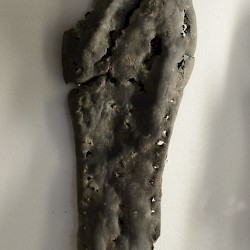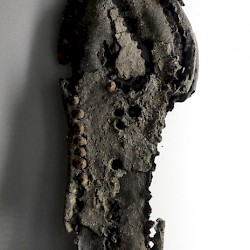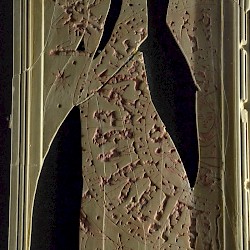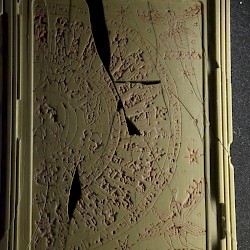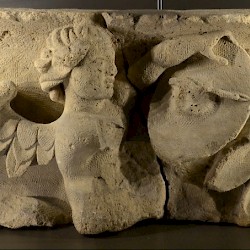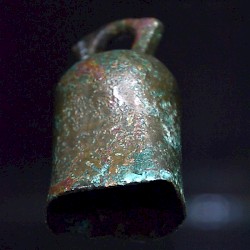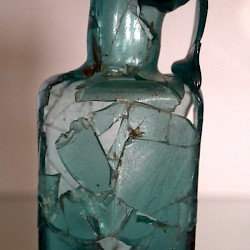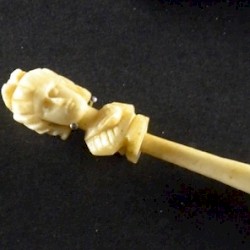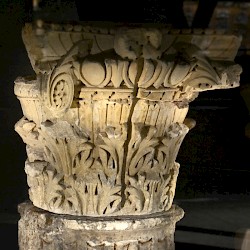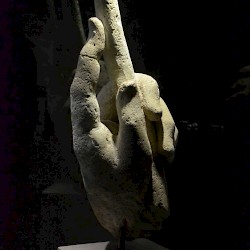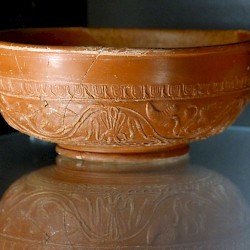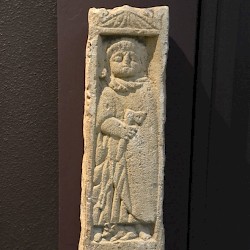Andesina (Grand)
Q1492517Andesina: town of the Gallic Leuci, major sanctuary of Apollo Grannus, modern Grand.
City of Grannus
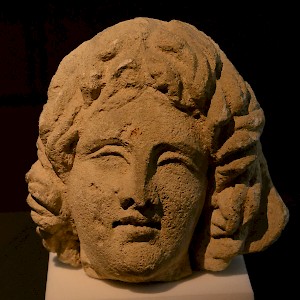
Grand, ancient Andesina, is situated on a limestone plateau. Rain and snow cannot seep away and will remain caught in underground caves, but can surface in natural pools. Because changes in precipitation can cause changes in the levels of the pools, the water levels are quite irregular. It is easy to understand why the ancients believed these springs, the "karst springs", to be supernatural.
Andesina was one of those sites: here, the ancient Gauls - more specifically, the tribe of the Leuci - venerated their healing god Grannus, whom the Romans would identify with their Apollo.note Because of the town's worship of the healing deity, Andesina was also known as Ad Grannum, "near Grannus", or (in Merovingian texts) just Grannum.
Interestingly, the water from the pool would leak away through faults in the limestone platform, only to resurface some two kilometers to the northeast, from where it fed a local river, which in turn fed the river Marne. The source of the river Meuse is also nearby, as is correctly shown on the Peutinger Map.
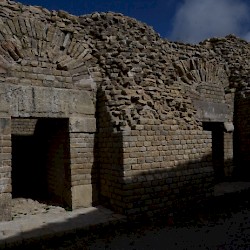 Andesina, Amphitheater, Cages |
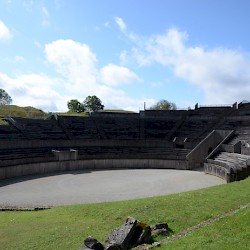 Andesina, Amphitheater, Arena |
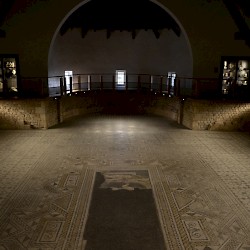 Andesina, so-called Basilica |
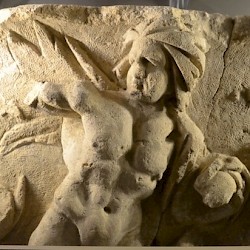 Andesina, Baths Rue de Liffol, Relief of a Triton |
Urban planning
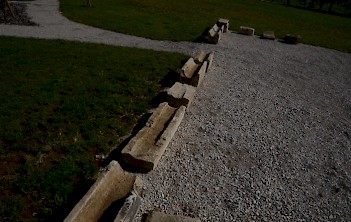
The Roman sanctuary appears to have consisted of a sacred pool and a temple. There may have been a connection to the bathhouses in the neighborhood. It would seem that in the Flavian period (69-96 CE), the Romans surrounded the sacred area by the voie close, the circular road with a diameter of 888 meters (3000 Roman feet) that still indicates the border of the town.
The circular enclosure within the voie close measured about sixty-five hectares. Archaeological research has shown that there was a grid-iron street plan in the northern half. Habitation continued beyond the circular road. In the east, the amphitheater was built in the Flavian period, within the round enclosure.
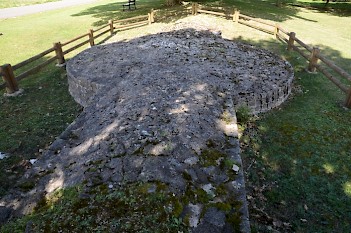
Within the circular enclosure, as a demarkation of a sacred space within a sacred space, we find Andesina's wall, which cannot be dated. It was more or less rectangular and enclosed some twenty hectares. This size is typical of Late Roman towns in Gaul, which suggests a date in the third or fourth century, but this is of course hardly conclusive. The wall can also date to the second quarter of the second century, when there was some building activity near the sanctuary.
Religion
The name of Apollo Grannus may have survived into the present age, he was not the only deity known from Andesina. Among the other deities known to have been venerated over here are the Sea Goddesses, Nemesis, Diana, Silvanus, Abundance, Merucry, Rosmerta, Isis, Fortuna, Mars, and Hygeia. As a healing goddess, the last-mentioned deity may of course have been part of the cult of Apollo Grannus. The decoration of the so-called basilica is Dionysiac in nature.
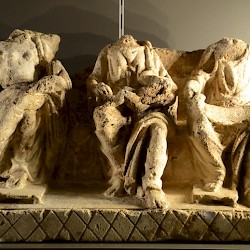 Andesina, Goddesses of the sea |
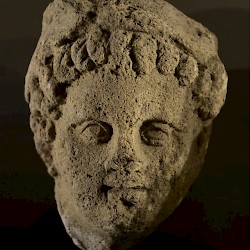 Andesina, Mercury |
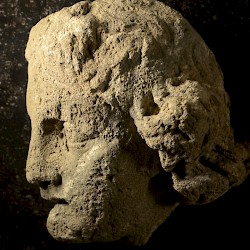 Andesina, Hygeia |
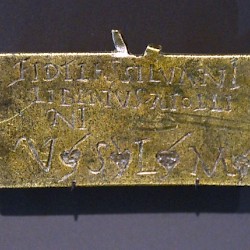 Grand, Dedication to Silvanus |
The sanctuary of Apollo Grannus was perhaps visited by the emperor Caracalla (r.211-217) in the year 212, but the evidence is not conclusive. The Roman historian Cassius Dio does indeed mention how the emperor sought a cure at a sanctuary of Grannus, but it is by no means certain that he is referring to Andesina. Aix-la-Chapelle and Faimingen, both in modern Germany, are also possible.note
Late Antiquity
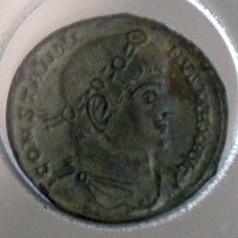
Andesina was certainly visited in 309 or 310 by Constantine the Great (r.306-337), who had his famous vision along the road to the sanctuary.note Coins of the early years of Constantine are overrepresented in the archaeological record, suggesting a visit of many people - the army that accompagnied the emperor. It is interesting that there is evidence that during the reign of Constantine, not Tullum (modern Toul) but Andesina was the capital of the municipality of the Leuci, which may have been Constantine's way of expressing his gratitude. The evidence consists of two milestones, found near Soulosse, which mention a distance to the capital that matches Grand and not Toul.note
Andesina was the site of the martyrdom of Liberia ("Sainte-Libaire"), who was reportedly beheaded in 362, during the reign of Julian the Apostate. There is a martyrion, just outside the voie close. Later, the sacred pool was filled with sand and a church was dedicated to Sainte-Libaire, Andesina's patron saint.
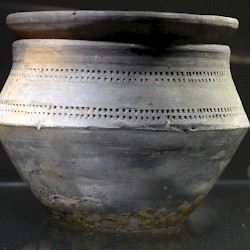 Grannum, Merovingian pottery |
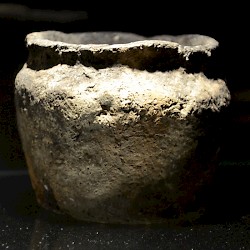 Grannum, Merovingian pottery |
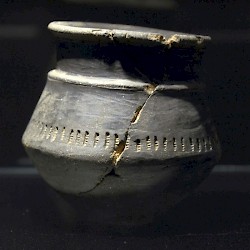 Grannum, Merovingian pottery |
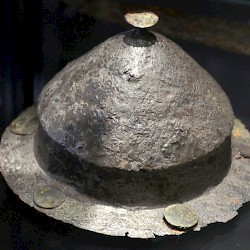 Grannum, Shield boss |
Merovingian Age
In the fifth century, Toul had become the capital again: it is mentioned in the text known as the Notitia provinciarum et civitatum Galliae ("Civitas Leucorum id est Tullo").note By now, there was Germanic infiltration and the town became part of the principality of a Frankish leader named Arbogast, who resided in Trier. As indicated above, the town was by now called Grannum. The finds from the Merovingian age are mostly from the cemeteries.
Literature
- T. Dechezleprêtre (ed.), Sur les traces d'Apollon. Grand la Gallo-Romaine (2010)
